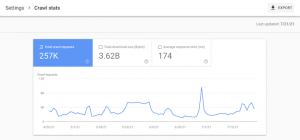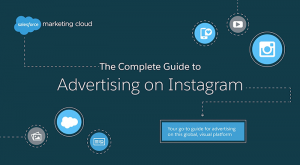
A blog is the best way for a small business to consistently bring traffic to its website.
Many small businesses shy away from blogging because it requires too much time and effort. But the fact is that blogs are 3 times more effective in generating leads than paid ads (source: Hubspot). Blogs are soft-selling your products and services all the time. Through your blogs, your audience understands your business’s objective and why they should do business with you. Let me give you an example.
A hand-made jewelry client needed ideas for content. I built a strategy for the brand to publish short articles on different styles of earrings and how to pair them with clothing. These articles were easy to write and did not require any research. This helped the brand’s audience to understand which earring to purchase, rather than decide based on the lowest price only. It also acted as a gentle nudge for the audience to check out different types of products. The brand started receiving more traffic to the website, after sending these blogs in their newsletter.
Blogging requires some planning but can be easily done by a solopreneur also. In this post, I am going to tell you how to use a blog to increase organic traffic.
Planning your blog
Before launching your blog, it is important to plan what you write and what you want to achieve. These are things you should plan for:
Objective: Think about the position of your blog in the customer’s journey. Is the objective of your blog to bring new traffic to your website? If so, then your blog needs to be highly optimised for both on-page and off-page SEO. This means that your blog should be using popular long-tail keywords that will show up on the search results on the first page. In addition, you should try to get references to your blog from external sources.
Or does the blog act as a next-level information provider to leads? You may decide that your blog is written for an audience that has found you already through some source. And you want to then keep them engaged in order to increase their trust in your business. In this case, your blog is communicating with an audience who is interested in knowing more about your business, so your blog can be more specific. The example I gave of the jewelry brand was based on this tactic.
What to write about: A typical objective of a B2B company’s blog is to showcase their thought leadership in the area of their business. This can take the form of providing knowledge through their blogs using case studies, relevant statistics, and their own experience. A B2C company usually uses blogs to highlight its products in a relatable manner to the audience. Smaller companies have an added advantage of talking about the impact of their business on the community. It could be providing employment to marginalised members of the society or the impact of their product on the community.
Frequency: There is no right or wrong answer to how often you should write. Pick a frequency that is attainable and stick to it. Make sure that your readers know in advance how often you will write a new article. I also recommended breaking up your blogs into seasons. This will allow you to plan a new season based on the learning from the previous one. You can then also create a short series of blogs, which is great to keep your readers hooked.
Marketing your blog
Now that you have a blog, you want to put it in front of people to read. Since blogs act as a brand awareness tool, your goal should be to increase the readership of your blog consistently. Here are some ways to grow your blog audience.
Optimising for SEO: Optimising for SEO is not an option, you should do it for every blog article you write. Having an optimised article will help Google identify what it’s about and slot it into the relevant search result. To optimise your article for SEO, pick a relevant long-tail keyword for the topic you are going to write about. The keyword should have a decent search volume (50 searches per month and above) and should have medium or low competition. Alternatively, you can use a tool like UberSuggest or AnswerThePublic to find out what topics are being searched for in your domain that you can write about.
Once your keyword is identified, use it in various places in your blog to optimise the article for SEO. Use the keyword in the title, first paragraph, image alt tags, and at the end of the article in a natural manner.
Social media: Having a blog is a great opportunity for content creation on your social media platforms. You can repurpose different sections of each article in different formats (video, carousel, or image) and publish on various platforms. The advantage of this type of marketing is that you are not selling your product directly. So people will more likely read your blog or follow you on social media when you publish knowledgeable content.
Don’t get fazed by starting a blog. If you write a blog for the middle of your sales funnel, you can be more specific and differentiate your blogs from the competition. These topics would be easier to write as well, as it is your niche. Follow the guidance I gave above to start blogging and growing your traffic organically.
Digital & Social Articles on Business 2 Community
(14)
Report Post







